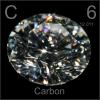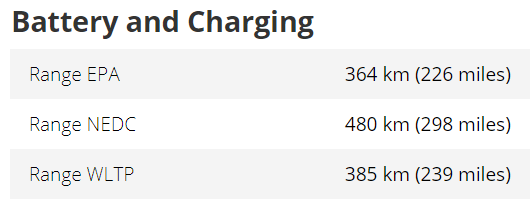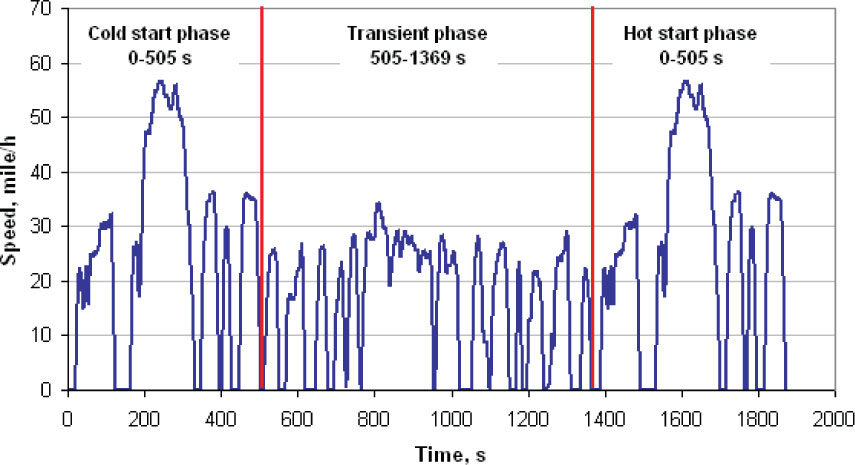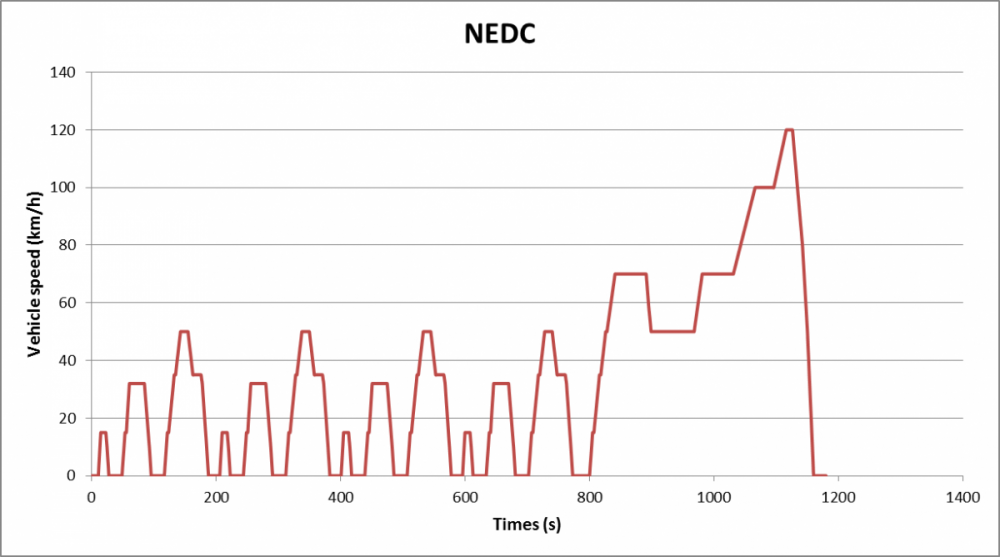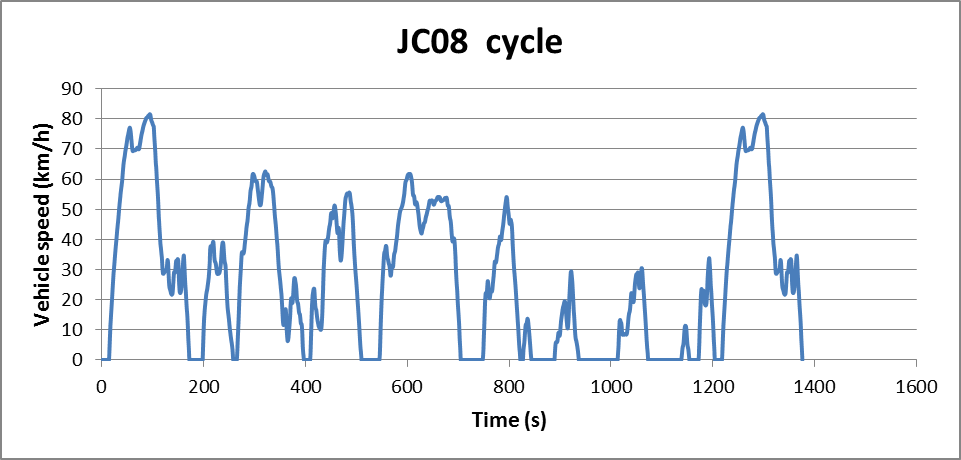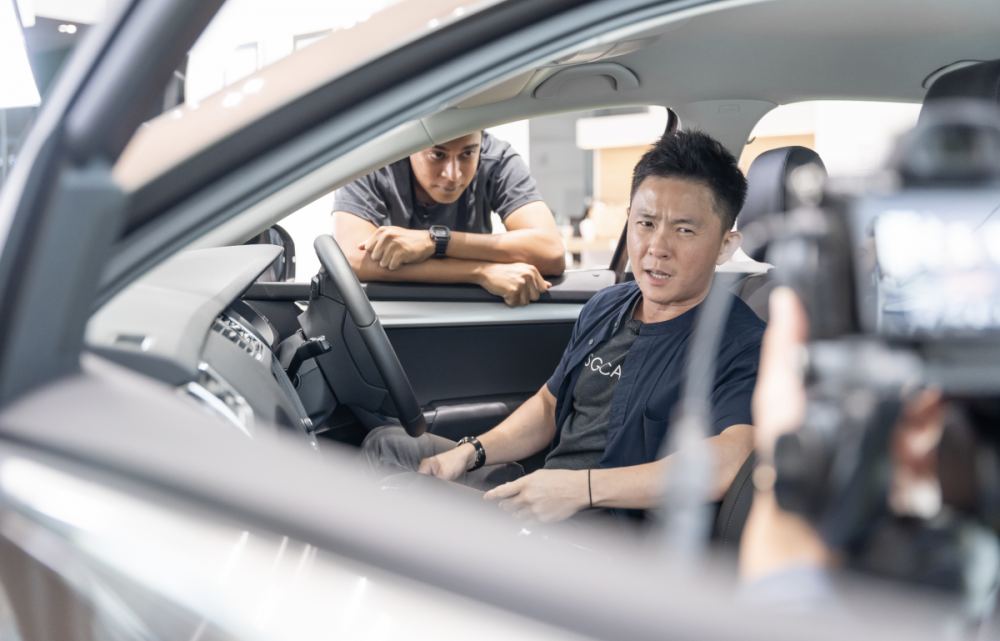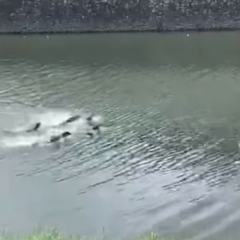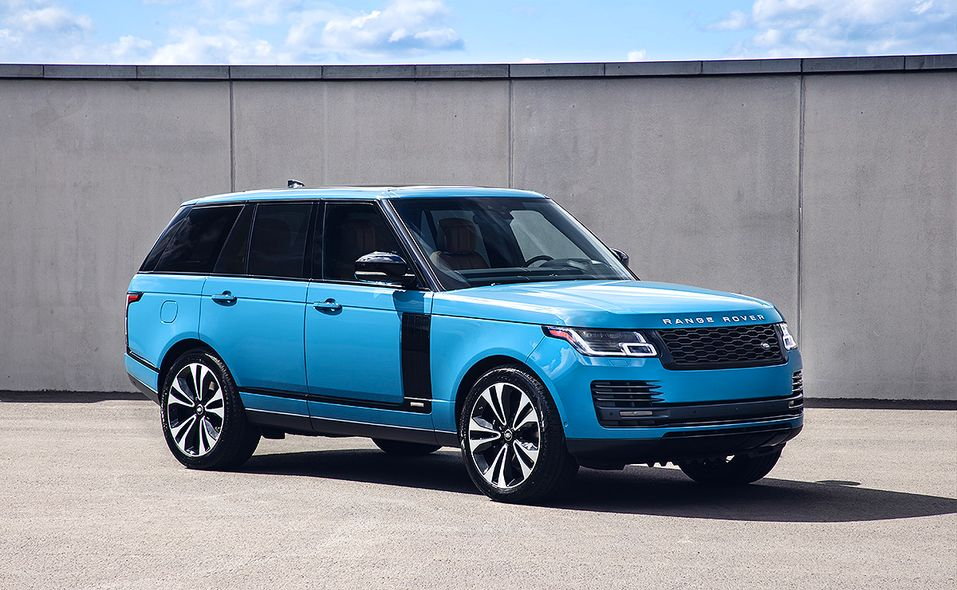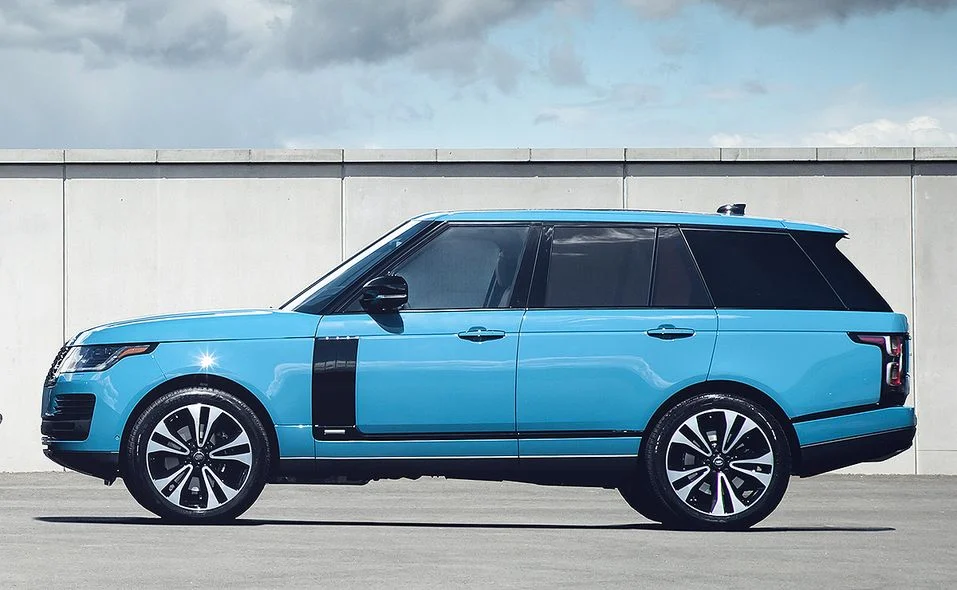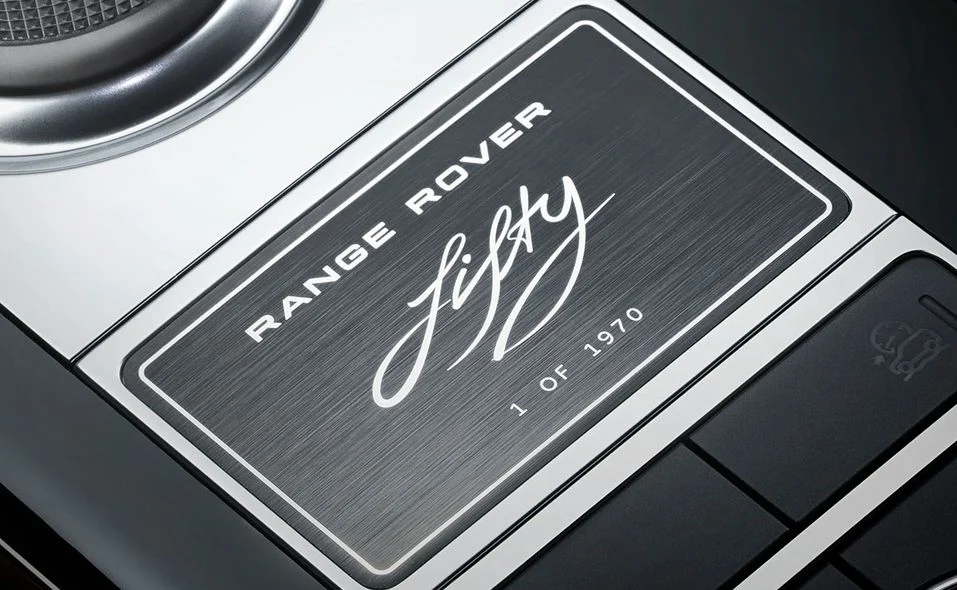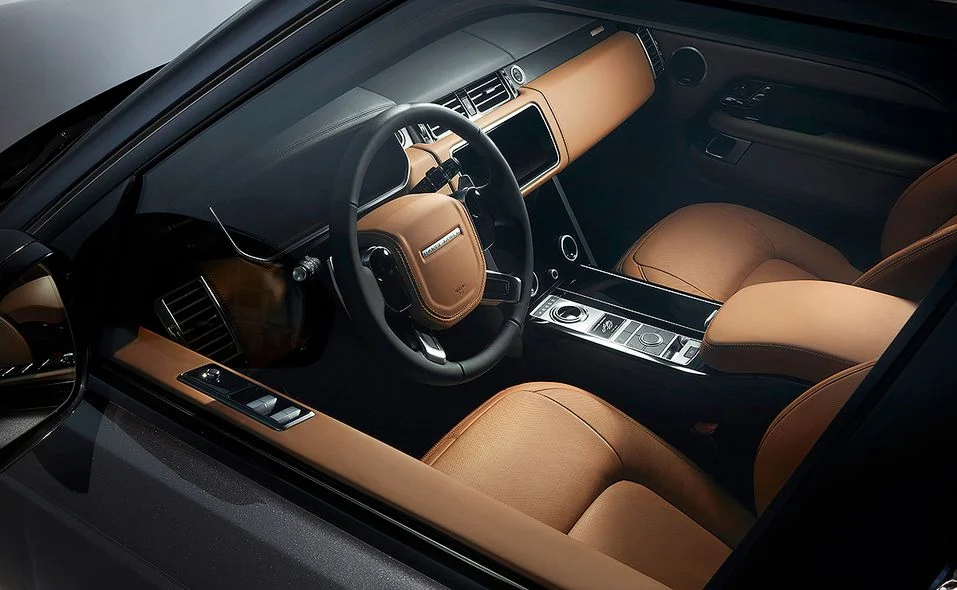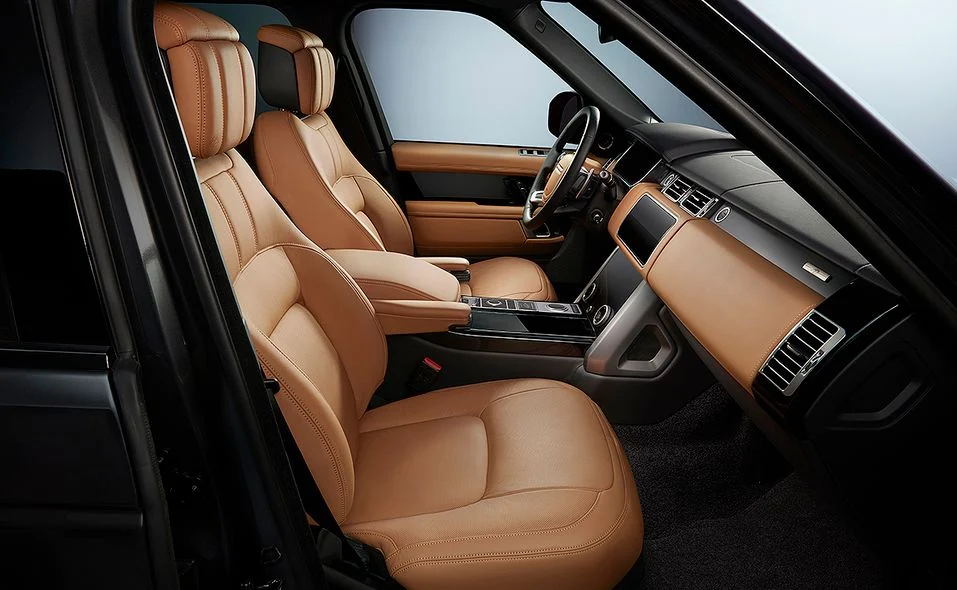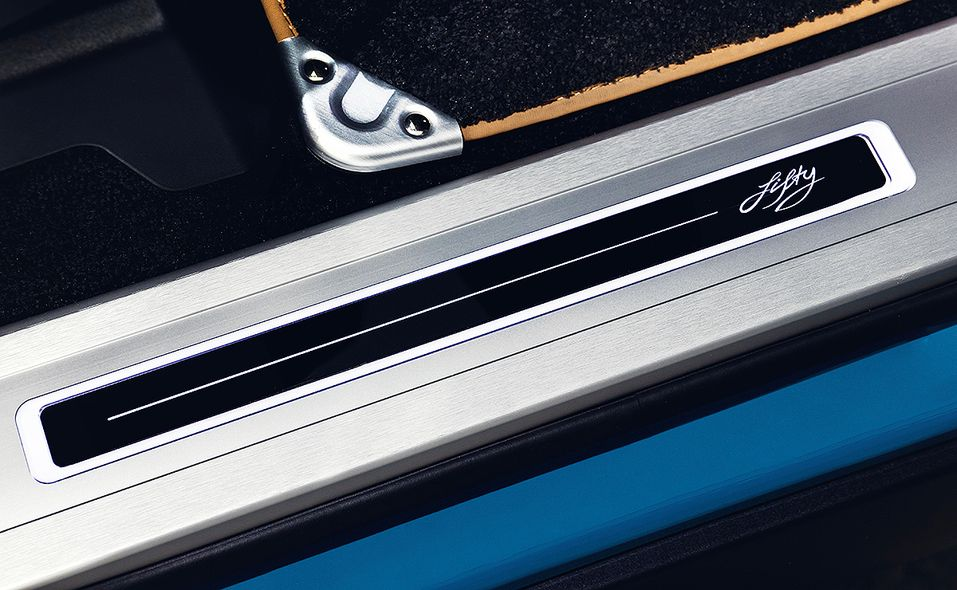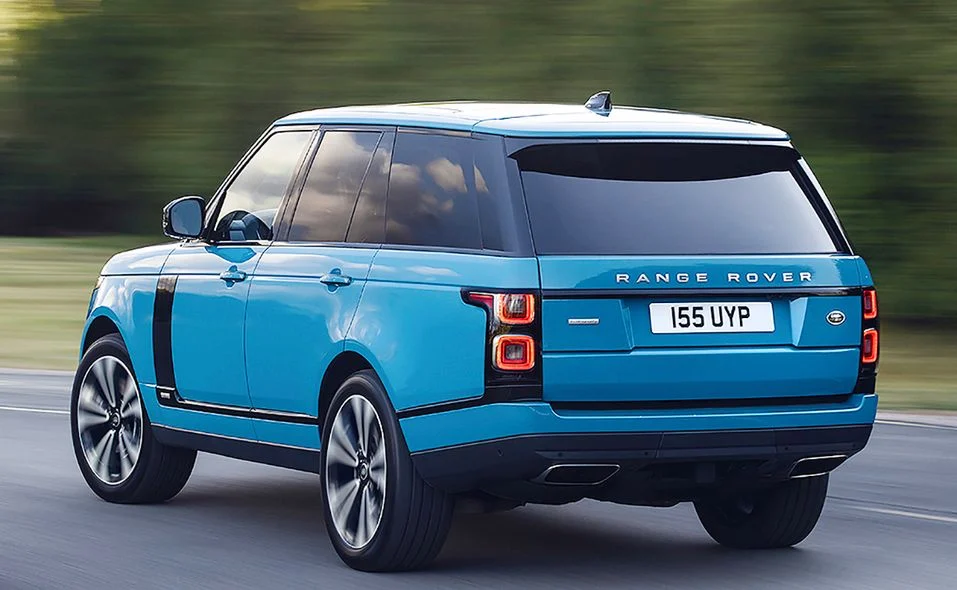Search the Community
Showing results for 'Range'.
-
Largest tyre/rims warehouse in Eastern - Paya Lebar (Till 1AM) , Northern - Woodlands (Till 8 PM) , Western - Jurong (Till 8 PM) and Central - Bukit Merah (Till 8 PM) Singapore daily (Mon - Sun), @ most competitive prices & widest range of selection 🙂 Call or PM us to get a best quotation for these Rims/Tyres ^^ You can also drop to our warehouse to get this ^^ HURRY !! While stock last !!! We welcome all and no obligation viewing ^^ Inclusive GST , installation , balancing , new valve . Operating Hours : 150C Paya Lebar Road Singapore 409052 Tel: 8418 1000 | Mon to Sun – 9am to 3am 39 Woodlands Close MEGA@WOODLANDS #01-01-03 Singapore 737856 Tel: 8418 6000 |Mon to Sun – 9am to 8pm 32 Old Toh Tuck Road Ibiz Center #01-05/07/08, Singapore 597658 Tel: 8418 5000 |Mon to Sun – 9am to 8pm Blk 1009 Bukit Merah Lane 3, Alexandra Industrial Estate #01-88, S159723 Tel: 84184000 |Mon to Sun – 9am to 8pm Website : http://www.altc.sg/ Facebook: http://www.facebook.com/pages/AL-TYRES-COO...ON/199681390912 Tumblr : http://altyres.tumblr.com/ Twitter : https://twitter.com/ALTYRES We accept NETS and Visa/Master Credit Card now , 0% interest free 6-12mths installments plan available for UOB / Standered Chartered Bank / Citibank credit card holders only ...***Term and condition apply _By Valerie_
-
hi bros, anyone have any information on this Range Rover Evoque? Looks great under top gear review and wondering how much is it going for in Singapore and when will it be available.
-
Did i mention that the day is near and that if the rest are not careful, PRC cars coming into PHEV from full EVs are going to hit them hard. Expect more China brands coming into this segment with longer and longer ranges. Now i am excited. https://carnewschina.com/2024/03/28/geely-and-byd-claim-2000-km-range-for-phev-systems/ https://carnewschina.com/2024/03/29/live-chery-challenge-2000-km-range-in-a-phev/
-
Source: https://www.motor1.com/news/686396/2024-hyundai-konda-electric-debut/ Hyundai today released additional details about the 2024 Kona Electric, including preliminary range estimates, specifications, and US availability. The current generation is among the few affordable electric vehicles in the US starting at under $35,000. The next generation is imminent and seems like a significant upgrade, at least on paper. The Korean carmaker had shared powertrain and production details early this year, but now we a few more details on the US-spec model. Design The Kona Electric’s nose is more aerodynamic with cleaner surfacing, and it continues to feature a split headlamp design, although the LED DRL is now full-width. Designers have also attempted to embed the parametric design theme from the Ioniq 5 with the creases on the side profile, and sculpted wheel arches, although reminiscence to its bigger sibling is little to none. It’s also more slippery, with a drag coefficient of 0.27, a slight improvement over the previous figure of 0.29. It also features active grill shutters to improve airflow when closed and cool the battery when open. The EV is longer, wider, and has an enlarged wheelbase compared to its predecessor. It measures 171.5 inches long (+5.9 inches), 71.9 inches wide (+1 inch), and 62.2 inches tall. Boot space is rated at 25.5 cubic feet, while the frunk only offers nine-tenths of a cubic foot (27 liters) of space. Battery, Range The Chevrolet Bolt EV competitor features a marginally larger battery pack, but the range estimates are nearly identical. The current Kona Electric draws power from a 64-kilowatt-hour pack, while the 2024 model will feature a 64.8 kWh battery capacity. Hyundai’s preliminary internal testing has indicated a 260-mile range, just two miles more than the current generation's 258-mile EPA range. The standard battery variant is estimated to have 197 miles of range. Charging times have improved slightly. Ten to 80 percent state of charge (SoC) can be achieved in 43 minutes with 400V Level 3 DC fast charging. Customers living in the colder US regions can also opt for battery pre-conditioning. Power output remains identical, with the long-range version’s front axle-mounted electric motor delivering 201 horsepower and 188 pound-foot of torque, while the standard range variant is rated for 133 hp and 188 lb-ft. More Features New features include vehicle-to-load functionality, with 1.7 kilowatts of maximum power output. There's also a new Smart Regenerative system which can alter the brake energy regeneration strength based on real-time traffic, an improved interior with ambient lighting, body-colored interior accents, and dual 12.3-inch panoramic screens for the gauge cluster and infotainment among other items.
-
Source: https://insideevs.com/news/685267/toyota-hilux-hydrogen-fuel-cell-prototype/ Toyota built its first Hilux Hydrogen Fuel Cell Prototype at its Burnaston vehicle plant in Derby, England. It is a joint project with consortium partners and was supported by UK government funding. The automaker intends to build 10 of them before the end of the year. This Hilux's powertrain uses parts from the Toyota Mirai. The automaker estimates that it has a range of 365 miles between hydrogen refills. For comparison, the Australian-market Hilux with the turbodiesel 2.8-liter engine can go about 715 miles (1,150 kilometers) between fill-ups. Images show that the hydrogen tanks fit between the frame rails roughly where the cabin fits. The other fuel cell components are under the hood, where the combustion engine usually is. The battery is at the rear. Toyota started this project in early 2022 as a feasibility study. Design and development began on July 1, 2022. The company started building a prototype on June 5, 2023. The automaker intends to put the 10 prototypes through testing to make sure the model lives up to the Hilux's rugged legacy. Toyota is prepping safety performance, functionality, and durability tests for them. The company wants to understand the opportunities and risks of a fuel-cell-powered pickup. In December 2022, Toyota showed off the electric Hilux Revo BEV Concept. The automaker didn't release any details about the truck at that time, like battery or motor specifications. During the presentation, Akio Toyoda said, "BEVs are not the only way to achieve the world’s carbon neutrality goals." Also in 2022, Toyota announced that it intended to build a light-duty pickup with a hydrogen fuel cell as a joint project with Isuzu and Hino. The company didn't specify a time frame for putting this model into production. Toyota is also considering whether to make a fuel-cell-powered version of the Land Cruiser. Plug-in hybrid and fully electric versions are also a possibility. At this point, it's not clear which, if any of these, would actually go into production.
-
Source: https://www.lowyat.net/2022/270902/smart-1-official-launch-specs/ Seven months after Concept #1 was revealed in Munich, the revitalise smart Automobile Co. has officially launched its first production model for the company’s new all-electric era, the smart #1. In case you’re wondering, the actual way to pronounce the EV’s name is “smart HASHTAG one” according to the official launch video. In case you are not familiar with the current iteration of smart Automobile Co., the company is no longer a full subsidiary of Mercedes-Benz but has been transformed into a joint venture between the company and Geely. As such, the Stuttgart giant is responsible for the design of the new smart #1 while the engineering portion is being handled by its Hangzhou counterpart. Exterior-wise, smart has generally retained the design lines of its Concept #1 for the production model albeit with some differences such as smaller 19-inch wheels, a less extravagant glass roof, and rear doors that still have front-mounted hinges. Measuring 4270mm long, 1822mm wide, and 1636mm tall alongside a wheelbase of 2750mm, the 1,820kg SUV also features concealed door handles and frameless doors together with up to 411L boot space and a 15L front boot. Alongside customisable ambient lighting, the smart #1 is equipped with touchscreen infotainment & vehicle control system that features a 12.8-inch Full HD display while the driver has also been provided with a 9.2-inch Full HD digital instrument cluster and a 10-inch Head Up Display. For the Premium and Launch Edition variants of the EV, there is also a 13-speakers audio system from Beats. Featuring a 200kw rear-wheel-drive setup that produces 272PS of power together with 343Nm of maximum torque, the SUV has a maximum speed of 180km/h. Through the car’s 66kWh battery, smart claimed that its new SUV is able to reach a maximum range of between 420km to 440km according to the WLTP standards. As always, charging times depends on the type of charger used with the smart #1. According to the company, the SUV can be charged from 10% to 80% in under 3 hours with a 22kW AC charger or in under 30 minutes when using a 150kW DC charger. Despite the official announcement today, smart didn’t reveal anything regarding the release date or the pricing for its new all-electric compact SUV. While Proton Edar has recently signed a deal to bring smart EVs into Malaysia, the company also has yet to make any official announcement regarding the availability of smart #1 for our market.
-
One death too many, 45th this year. This time a 31 years old Singaporean. Wonder what kind of machine. RIP. Rifle Range workplace death: Victim’s family wants more to be done to prevent such accidents https://www.straitstimes.com/singapore/rifle-range-workplace-death-victim-s-family-says-too-many-such-accidents-authorities-must-do-more
- 32 replies
-
- 10
-

-

-
- rifle range
- death
-
(and 1 more)
Tagged with:
-
There are many ways of provoking others on the road. Some common acts of provocation include tailgating, persistent honking, making offensive gestures, and intentionally blocking other road users. Watch how this cam car driver intentionally blocks another car from passing: What Happened? This incident occurred at Irwell Bank Road, in the vicinity of River Valley. The driver of a Ranger Rover Velar was swerving left and right between two lanes and intentionally blocking the cam car from passing. As both cars started nearing the red light, the cam car driver gave two short honks to the Ranger Rover. It is unknown if there was a prior altercation between both parties. From the audio recording of the cam car, it seems that the cam car is a Private Hire Vehicle (PHV) driver with at least two passengers on board. After the two short honks, the male passenger could be heard telling the PHV driver the following: "If you guys want to fight, fight somewhere else, please. Let me get off first, please." After that, the other female passenger echoed similarly, saying: "Ya, let me get off." The PHV driver apologises to both passengers for his behaviour. Subsequently, after the atmosphere in the vehicle settled, both passengers could be heard encouraging the PHV driver to make a police report over this incident. Range Rover Driver Is Not The Only One Who Should Be Reported Did your keen eye catch it? There are four lanes on that road going straight, with the first lane being a "go straight or right turn" lane. If you watched carefully, the Range Rover drove through the cross-junction from lane 3 to 1. The PHV driver did something similar by driving through the cross-junction from lane 2 to lane 1, squeezing a Honda Stream to his right out of the way. And the worst part is that neither the PHV driver nor his passengers realised what he did. Let me know your thoughts on this incident in the comments below! Netizens' Comments I bet cam car didn't realise his self-pwn by uploading his dash cam footage. The amount of sarcasm in the last sentence tho. Testing + warming up new tyres. ========= Be the first to get the latest road/ COE news, and get first dibs on exclusive promos and giveaways in our Telegram SGCM Community. Join us today!
- 7 comments
-
- 1
-

-
- range rover
- river valley
-
(and 2 more)
Tagged with:
-
TL;DR – A Range Rover enters the main road via a small lane along Braddell road without looking out for oncoming traffic. Cam car manages to evade a T-bone incident with the Range Rover, but it almost came with a huge cost. Wow. I know the Range Rover is a big a#@ car, but shouldn’t that mean you can see almost everything as the driver? Not this guy Watch this 35-second video and see how oblivious the Range Rover driver is. Dangerous evasive manoeuvrers By some miracle, the cam car managed to avoid T-boning the Range Rover, but it had to swerve into the next lane and cut across double white lines in the process. If there had been another vehicle on its right, the crash would have been devastating. Not to mention, the cam car would have to foot the damages. Online Chatter A little harsh. Not! Sounds legit. Very vindicative bunch of comments. Love it. Looks like just smashing the Rover might be the best option here. ----------------------- Witnessed an accident? See something interesting on the roads? Submit your image/video/news via MyCarForum's WhatsApp. We'll pay you $10 per post!
-
- land rover
- range rover
- (and 10 more)
-
Launched earlier in the year and sporting a more intuitive refreshed interface, BMW's latest connected apps, MyBMW and Mini app, have just been updated with an extended range of features to further engage drivers and owners with their latest driving machines. The latest version of the app brings with it a number of new upgrades and will now allow you to access your vehicle's current status, view live images from your car’s surroundings, arrange service appointments, receive news from BMW and even plan routes by transferring them to the car’s navigation system using your mobile device. A key new feature of the MyBMW app is the inclusion of a tire monitoring system, giving you up-to-date data on the condition of your tires. The digital tire diagnosis feature, unique to this app, can also transmit information about defects, damage or wear to the tires in addition to your current tires' air pressures. Giving you an early update on the condition of your rubber before embarking on any journey. With the data captured by the tire pressure control system on the values for temperature and wheel speeds, a forecast of the remaining life of the tires will also be created by the car's back-end systems. In addition to these new upgrades, complimenting the latest build of the app are a series of existing features useful to all owners and drivers. Allowing them the ability to view and check on the current status of their vehicle allows them to control various functions of the car from the comfort of their home, all through a mobile device before opening their doors using their mobile's BMW digital key. As always, drivers can preset their car's climate before their journeys for the perfect temperature from the immediate get-go. Perfect for those humid sunny days we often get in Singapore. On vehicles with charging capabilities, the map also allows for a quick search for the nearest charging points and within the app, a live indicator of the vehicle's level of charge, the status of the car's battery levels and estimated full charge duration allowing for a seamless day out. For those curious about the latest products from BMW, MyBMW also allows users the ability to view product demonstrations on various other vehicles within the range easily and for the casual BMW fan, using the Explore BMW tab brings up a showcase of the latest BMW news and stories. While these new features bring a remarkably impressive connected life between drivers and their vehicles, we're pretty sure the team behind MyBMW already have a long list of innovative new features planned for the not too distant future. So, if you haven't already downloaded it. What are you waiting for? To download, head to the app store and the google play store on your respective devices. It's free by the way.
-
To be officially unveiled next week. Stay tuned. The new model will be based on Jaguar Land Rover’s brand new MLA platform, which allows for Mild Hybrid, Plug-in Hybrid, and Battery Electric variants. The same platform will underpin the slightly smaller Range Rover Sport which is expected to be unveiled in 2022. As for the powertrains, most likely all of them will receive some form of electrification for improved efficiency and comply with the ever-stricter emission regulations. The base model will probably retain the current mild-hybrid inline-six 3.0-liter engine, while the most powerful variant is rumored to get a BMW-sourced 4.4-liter V8. The most popular option will probably be the plug-in hybrid version, thanks to the combination of a gasoline motor plus a sufficient electric range for daily use. We also expect a BEV variant for the first time in Range Rover’s history, which could lead the popular series into the future following the imminent ICE sales ban in Europe.
- 5 replies
-
- 6
-

-
- land rover
- range rover
-
(and 2 more)
Tagged with:
-
All EVs offer a multitude of measures used to slow down the process of battery degradation. However, the process is inevitable. While electric vehicles have been proven to have considerably lower ownership costs compared to their ICE counterparts, battery longevity remains an equivocal subject. Similar to how consumers ask how long the batteries can last, manufacturers often question the same subject. ''Every single battery is going to degrade every time you charge and discharge it,'' Atlis Motor Vehicles CEO, Mark Hanchett, told InsideEVs. Essentially, it's inevitable that your electric car battery, or any rechargeable Li-ion battery, will lose its capacity it once had. However, the rate at which it'll degrade is the unknown variable. Everything ranging from your charging habits to the very chemical makeup of the cell will affect your EV battery's long-term energy storage. While many factors are at play, there are four main elements that assist in further degrading EV batteries. Fast Charging Fast charging itself doesn't necessarily cause accelerated battery degradation, but the increased thermal load can damage the internal components of the battery cell. The damage of these battery internals leads to fewer Li-ions being able to transfer from the cathode to the anode. However, the amount of degradation the batteries face is not as high as some may think. Earlier last decade, the Idaho National Laboratory tested four 2012 Nissan Leafs, two charged on a 3.3kW home charger and the other two strictly charged at 50kW DC fast stations. After 40,000 miles, the results showed that the one charged on DC only had three percent more degradation. 3% will still shave your range, but the ambient temperature seemed to have a far greater effect on the overall capacity. Ambient Temperatures Colder temperatures can slow down an EV's charge rate and temporarily limit the overall range. Warm temperatures can be beneficial for rapid charging, but prolonged exposure to hot conditions can damage the cells. So, if your car is sitting outside for long periods, it's best to leave it plugged in, so it could use the shore power to condition the battery. Mileage Like any other rechargeable lithium-ion battery, the more charge cycles, the more wear on the cell. Tesla reported that the Model S will see around 5% degradation after breaching 25,000 miles. According to the graph, another 5% will be lost after around 125,000 miles. Granted, these numbers were calculated via standard deviation, so there are likely outliers with defective cells that weren't shown in the graph. Time Unlike mileage, time typically takes the worst toll on batteries. In 2016, Mark Larsen reported that his Nissan Leaf would lose around 35% battery capacity at the end of an eight year period. While this percentage is high, it's because it's an earlier Nissan Leaf, which is known to suffer from severe degradation. Options with liquid-cooled batteries should have much lower percentages of degradation. Editor's note: My six-year-old Chevrolet Volt still shows it uses 14.0kWh after depleting a full battery. 14.0kWh was its usable capacity when new. Preventative Measures To keep your battery in the best possible condition for the future, it's necessary to keep these things in mind: If possible, try to leave your EV plugged in if it's sitting for an extended period of time in the summer months. If you drive a Nissan Leaf or another EV without liquid-cooled batteries, try to keep them in a shady area on the hotter days. If your EV has the feature equipped, precondition it 10 minutes before driving on hot days. This way, you can prevent the battery from overheating on even the warmest summer days. As mentioned above, 50kW DC isn't as detrimental as most think, but if you're sticking around town, AC charging is cheaper and usually more convenient. Plus, the aforementioned study did not include 100 or 150kW chargers, which most new EVs can utilize. Avoid getting your EV below 10-20% battery remaining. All EVs have a lower usable battery capacity, but avoiding reaching the battery's critical zones is a good practice. If you drive a Tesla, Bolt, or any other EV with a manual charge limiter, try to not exceed 90% in day-to-day driving. Are there any EVs should I avoid? Almost every used EV has an 8 year / 100,000-mile battery warranty which covers degradation if the battery's capacity drops below 70%. While this will offer peace of mind, it's still important to buy one with enough warranty left. As a general rule of thumb, any old or high mileage option should be cautiously regarded. The battery technology available today is far more advanced than tech from a decade ago, so it's vital to plan your purchase accordingly. It's better to spend a little more on a newer used EV than paying for an out-of-warranty battery repair.
-
Preface: When I replied the other Electric Car thread about NEDC and WLTP range for the new 2020 BYD Han EV, it crossed my mind that maybe I should be writing a proper guide for this. In the future when Electric Vehicles (EVs) pick up in Singapore, I believe there will be many people who will search these terms on MCF. Main topic: What is the difference between NEDC, WLTP, EPA, JC08, CATC when we talk about driving range of EVs? Let's say you are looking to buy an EV, or maybe just reading articles on EV, you come across the statement "This car can achieve 480km of electric driving range at NEDC". What does that mean? Or when you search online for an electric vehicle, you come across the following picture: Why are there 3 numbers for Range, and why are they all so different? Just like testing the fuel economy of engines, there are many different kinds of testing procedure around the world to test on electric vehicle driving range. The main 4 currently in 2020 are: EPA, NEDC, WLTP and JC08 (more about the last standard CATC later). Here are quick descriptions for each of them: 1) EPA - stands for Environmental Protection Agency. This is a standard that is based in the United States, usually publishing their range figures in miles rather than kilometers. The EPA testing cycle follows the graph below (correct as at 2020). As you can see, the test is heavily based on city driving; the maximum speed does not even reach 60 miles/hr (97km/h), and a lot of time is spent only up to 40 miles/hr (64km/h). 2) NEDC - stands for New European Driving Cycle. As the name suggests, this is a standard that is based in the European Union, but is used by other countries such as China. Don't be fooled by the name "New", because new meant 1997. This is actually a rather old standard, and is currently in the process of being replaced by the WLTP standard. So very often you will see both numbers in EV catalogues, but this number will likely disappear soon. The NEDC testing cycle follows the graph below (correct as at 2020). Like the EPA testing cycle, you can see a heavy emphasis on city driving below 60km/h. However, the last part allows the test to have some representation of highway driving of up to 120km/h. 3) WLTP - standard for Worldwide Harmonised Light Vehicle Test Procedure. As mentioned earlier, this is meant to replace the old NEDC standard. Many countries in the European Union as well as China have started to transition to this. The WLTP testing cycle follows the graph below (correct as at 2020). Compared to the old NEDC testing cycle, the graph is more non-linear to represent real-world driving styles better. Also, there is more time spent in the last 2 sections at high speeds above 80km/h even up to 130km/h unlike the old NEDC testing cycle. This will help to represent highway driving better, especially in the European Union. Overall, a good upgrade from the current NEDC test. 4) JC08 - stands for Japan Cycle '08. As the name suggests, this is is a standard that is based in Japan, with not much use anywhere else in the world. Unintuitively, this test first started in 2005 even though the last 2 numbers are 08; the number 08 stands for the testing cycle number. The JC08 testing cycle follows the graph below (correct as at 2020). Like the EPA testing cycle, there is a heavy emphasis on city driving below 60km/h. Furthermore, even their "fast" speeds to represent highway driving barely touches 80km/h. Probably a good representation of driving styles in Japan with many small roads. Now that you know the 4 main cycles in 2020, which one is the most accurate? This is a difficult answer because as you can see, all the tests are based on different driving styles. Furthuremore, it also depends on your own driving style just like how an engine car can claim to get 20km/L on the brochure but when you buy it, you only get 15km/L. That being said, many journalists and regular drivers around the world have claimed that the EPA range gives the closest to the actual driving range a person will get. WLTP follows closely to EPA, while JC08 and NEDC electric driving ranges are almost impossible to achieve during regular driving. For those who want a bit more detailed numbers, NEDC to WLTP = NEDC * 0.78 NEDC to EPA = NEDC / 1.43 WLTP to EPA = WLTP / 1.12 Don't forget to change from miles to kilometers if you want to follow metric standard in Singapore! (Note 1:numbers taken from this article, and I have personally found it to be fairly accurate https://insideevs.com/features/343231/heres-how-to-calculate-conflicting-ev-range-test-cycles-epa-wltp-nedc/) (Note 2: I skipped JC08 because only Japan uses it. Japanese cars are mostly sold elsewhere in the world too, so they would come with an accompanying EPA or WLTP number) Lastly, a brief introduction to our last standard, CATC. 5) CATC - stands for China Automotive Testing Cycle. This is China's specific testing cycle meant to replace the WLTP that they are currently using, and is planned to start beginning first half of 2021. There isn't much information available regarding it now, but when it comes up I will update this post to include the driving cycle. So there you have it. Your introductory answers to questions on EV driving cycles EPA, NEDC, WLTP, JC08 and CATC. Please let me know if you would like more things to be added.
-
[FB Live] Get Exclusive Prices Across The Entire Volkswagen Range On Our Facebook LIVE featuring Julian and Idris! Get FREE Udders ice cream when you RSVP your interest here! We are back by popular demand! And this time, we have partnered up with Volkswagen to bring you exclusive prices with instant discounts when you catch our e-MarkDown Facebook Live, and don’t miss the virtual tour around Volkswagen’s newly revamped Showroom! Highlights of the event! Free 100ml of udders ice cream (Limited to first 100 paxs) 3 x $100 Petrol Vouchers to be won During Lucky Draw $20 shopping voucher to be won when you like and share during our Facebook Live event! Make sure you look out for attractive prizes during our Facebook LIVE For all the potential car buyers out there, we will be giving away an instant discount off selected car Volkswagen models during our Facebook Live! #noworriesonCOErises! Get FREE Udders ice cream when you RSVP your interest here! Okay, Sold. What am I suppose to do next? Step 1: Click on to this link and register yourself to this event! Get FREE Udders ice cream when you RSVP your interest here! Step 2: Get reminded Step 3: Stand by at your desktop or mobile during 15 Oct, 8pm! Step 4: Like and Share and participate in our fun activities during the FB Live and win attractive prizes! Bonus step: You can also secure your next car with an instant discount! Get FREE Udders ice cream when you RSVP your interest here!
- 2 replies
-
- facebook live
- volkswagen
-
(and 7 more)
Tagged with:
-
Land Rover is giving the Range Rover a special edition to mark the 50th anniversary of the nameplate’s debut in 1970. The Range Rover 50th-anniversary edition will be available in standard or long wheelbase and with a 5.0-liter supercharged V-8 engine rated at 518 hp. It will be available in four colors, but the Land Rover Special Vehicle Operations division will offer small numbers of the vehicle painted in one of three additional heritage colors from the original 1970 Range Rover lineup: Tuscan Blue, Bahama Gold or Davos White. Land Rover will build just 1,970 Range Rover Fifty models for all global markets. Fewer than 400 are planned to be sold in North America.
- 4 replies
-
- 2
-

-
- range rover
- land rover
- (and 3 more)
-
Evoque R-Dynamic "First Edition" Evoque D240 HSE Evoque D240 HSE R-Dynamic Black Pack Having pioneered the luxury compact SUV market, now with more than 217 international awards, the new Range Rover Evoque, available in 127 countries, is a sophisticated evolution of the original. Combining unrivalled Range Rover heritage with cutting-edge technology - designed, engineered and manufactured in Britain - it meets the needs of today's customers. Building on the original's instantly-recognisable design, the new Range Rover Evoque is a sophisticated evolution of the distinctive coupé-like silhouette, typified by its distinctive fast roofline and rising waist that identify the Range Rover family. The outstanding volume and proportions are amplified by its pronounced shoulders and powerful wheelarches that, alongside 21-inch wheels, combine to create a strong and dynamic attitude. The introduction of jewel-like elements such as super-slim Matrix LED headlamps provide a more sophisticated front and rear lamp graphic. Flush door handles add to the smooth, sculpted aesthetic, while sweeping directional indicators create a purposeful signature. Optional R-Dynamic details and burnished copper accents add to the unique appeal. Inside, the finely crafted design integrates uncluttered surfaces and simple lines with carefully curated premium materials to create a luxurious, minimalist, digital cabin. Technical textiles that use recycled plastics are offered as premium alternatives to leather, such as a Kvadrat wool blend and Dinamica® suedecloth, as well as Eucalyptus and Ultrafabrics™ options. The cabin is designed to be a calm and serene space, ensuring comfortable, healthy and happy occupants, with technologies such as the twin touchscreen Touch Pro Duo system, featuring new, faster software, 16-way seat controls and cabin air ionisation that complement the increased interior space. The compact footprint is almost identical at 4.37m, yet built on Land Rover's new Premium Transverse Architecture, there is more interior space than before. A longer wheelbase yields 20mm extra rear kneeroom and an increase in small item stowage - the larger glove box and centre cubby can now fit tablets, handbags and bottles with ease. The luggage space is 10 per cent larger (591 litres) as well as much wider and easily fits a folded pram or set of golf clubs, with space increasing to 1,383 litres when the flexible 40:20:40 second-row seats are folded. The new architecture has been developed for electrification, with a 48-volt mild-hybrid available at launch and a plug-in hybrid model offered around 12 months afterwards. The mild hybrid powertrain is a first for Land Rover and works by harvesting energy normally lost during deceleration thanks to the engine-mounted belt-integrated starter generator, storing it in the under-floor battery. At speeds below 17km/h (11mph), the engine will shut off while the driver applies the brakes. When pulling away, the stored energy is redeployed to assist the engine under acceleration and reduce fuel consumption. The result is a refined, quiet and efficient drive in built-up traffic heavy areas, in addition to efficiency savings. The lowest emitting CO2 derivative is the 143g/km front wheel drive, manual transmission with 150PS Ingenium diesel engine. The most popular all wheel drive, automatic transmission vehicles, come with a choice of four-cylinder Ingenium petrol and diesel engines. This is where the 48-volt mild-hybrid system is used to reduce CO2 emissions to as lows as 149g/km and fuel economy from 50.4mpg (5.6l/100km) (based on NEDC Equivalent test procedure). An even more efficient plug-in hybrid electric vehicle (PHEV) and three-cylinder petrol Ingenium engine will also join the range. Every bit a Range Rover, the compact SUV combines all-terrain capability with all-weather assurance. New Evoque features All-Wheel Drive, as well as a second-generation Active Driveline with Driveline Disconnect to enhance efficiency and Adaptive Dynamics to deliver the optimum balance of comfort and agility. Terrain Response 2 - technology first found on full-size Range Rover - automatically detects the surface being driven on a adjusts the set-up accordingly, while Evoque can now wade through water up to 600mm (previously 500mm). Combining all-terrain capability with on-road composure, the Evoque's new MacPherson Hydrobush front and Integral Link rear suspension and Adaptive Dynamics technology deliver not only improved refinement and stability in all conditions, but enables the agile handling that makes Evoque ideal for the tight city streets of many countries around the world. The famed Range Rover command driving position has jumped into the digital age, with a segment-first 'ClearSight rear-view mirror' that transforms into an HD video screen. If rear visibility is compromised by passengers or bulky items, the driver simply flicks a switch on the underside of the mirror and a camera feed from the top of the car displays what is behind the vehicle in crisp high definition. The screen provides a wider (50-degree) field of vision and superior visibility in low light. The new Range Rover Evoque is also the first in the world to feature Ground View technology, which effectively makes the bonnet invisible by projecting camera imagery onto the upper touchscreen to show the driver a 180-degree view under the front of the vehicle. This is useful when negotiating difficult parking spaces, navigating high city centre kerbs or tackling rough terrain and is the realisation of the Transparent Bonnet technology previewed by Land Rover in 2014. There is a reversing camera as standard on all models, alongside a suite of advanced driver assistance systems. This includes Adaptive Cruise Control with Steering Assist, which centres the vehicle in the lane based on road markings as well as maintaining a safe distance from the vehicle in front. Active safety features such as Lane Keep Assist, Autonomous Emergency Braking and Driver Condition Monitor are all available to keep occupants safe. Evoque is the first Land Rover with Smart Settings, which uses artificial intelligence algorithms to learn the driver's preference and acts as an onboard butler. In addition to seat position, music and climate settings, Evoque can also control steering column preferences to maximise comfort. SUSTAINABILITY Jaguar Land Rover has focused on reducing the environmental impact of vehicles and operations. This has included reducing the CO2 it takes to build each car by 46% versus 2007 levels and the purchase of zero carbon electricity for all UK operations. As a result, Jaguar Land Rover has now worked with the Carbon Trust to certify as Carbon Neutral, the UK manufacturing and production development sites, from April 2017 to March 2018. This includes the manufacture and development of the new Range Rover Evoque. Built on Land Rover's new mixed-metal Premium Transverse Architecture, Evoque fuses efficient Ingenium diesel or petrol powertrains, hybrid-electric power and sumptuous, sustainable materials. Up to 33kg of natural and recycled material is used in each Evoque to minimise environmental impact. The recycled materials are taken from a mixture of post-consumer or post-industrial sources within the supply chain. Land Rover's drive for sustainability is further reflected in its move towards a wider choice of responsibly-sourced interior materials that retain the Range Rover Evoque's trademark luxurious feel. Featuring ground-breaking textiles and trim finishes, two new seat options are on offer. Customers can choose seats upholstered in a premium alternative to leather developed by Danish textile experts, Kvadrat - a high-quality material that combines a durable wool blend paired with a technical Dinamica® suedecloth, made from 53 recycled plastic bottles per vehicle. In addition, customers will have the option of a new Eucalyptus textile produced from natural fibres that when grown, uses significantly less water than traditional materials and features alongside a new lightweight performance material not derived from animals. Each option has a sumptuous feel and unique design, offering a truly premium alternative to leather. The new Evoque will be available from launch with a 48-volt mild-hybrid electric vehicle powertrain that harvests energy normally lost during deceleration and stores it in the underfloor battery. At speeds below 17km/h (11mph), while under braking, the engine will shut off to minimise emissions. This technology combines to reduce fuel consumption and tailpipe emissions, now as low as 50.4mpg (5.6l/100km) and CO2 emissions of 149g/km (NEDC Equivalent). When the driver accelerates, the stored energy is redeployed to assist the engine under acceleration, reducing fuel consumption and making the new Evoque an ideal SUV for driving in congested, stop-start city traffic. This mild hybrid powertrain will be joined by a plug-in hybrid electric vehicle model in 2019. Customers can also choose between six Ingenium four-cylinder powertrains, with three petrol and diesel variants, respectively. The most efficient of these is the 150PS diesel (FWD) with emissions of 143g/km (NEDC Equivalent) and 5.4l/100km (52.3mpg) while, at the other end of the performance scale, there is a 300PS AWD petrol model with 400Nm of torque, emissions of 186g/km (NEDC Equivalent) and 8.1l/100km (34.4mpg). CAPABILITY The Range Rover Evoque is based on Land Rover's new mixed-metal Premium Transverse Architecture, which has been designed for hybrid-electric power - 48-volt mild hybrid, 3-cylinder Plug-in Hybrid - and three- and four-cylinder Ingenium petrol and diesel engines. The new body is 13% stiffer than its predecessor, which together with rigidly-mounted subframes reduces noise and vibration intrusion into the cabin. With a 21mm longer wheelbase and compact new suspension design, the compact SUV delivers increased interior room and improved handling in all conditions. The Ingenium engines have been advanced with new technologies to make them quieter and more refined, while the ZF nine-speed automatic gearbox has been recalibrated to ensure a smoother, more progressive drive on all-terrains. Integral Link rear suspension separates lateral and longitudinal forces to enhance body control and agility, providing greater comfort and confidence on the road. At the front, MacPherson strut Hydrobush front suspension features fluid-filled bushes to minimise the high-speed wheel vibration felt through the steering wheel. Adaptive Dynamics combines intelligent sensors and continuously variable suspension dampers that monitor road conditions every 100 milliseconds. The system constantly adjusts the dampers to give a composed ride with maximum control, regardless of any change of terrain or surface. Active Driveline is introduced on new Evoque, which is an electronic torque vectoring system that constantly balances the distribution of engine torque across both front and rear axles when cornering to improve grip and steering confidence. Driveline Disconnect fully disengages drive to the rear wheels when cruising to reduce frictional losses and improve fuel economy, before seamlessly re-engaging in a fraction of a second when conditions dictate to ensure no loss in traction. The new Evoque raises the bar for all-terrain capability in the compact luxury SUV sector, with a unique blend of inherent off-road ability and enhanced technology to provide traction on all surfaces and in every condition. Ground clearance is 212mm, while approach and departure angles are 25 degrees in the front and 30.6 degrees in the rear. Terrain Response 2 is available as standard for the first time on new Evoque with All-Wheel Drive and automatic transmission. Not only will this allow drivers to choose from four modes (Comfort, Sand, Grass-Gravel-Snow, and Mud & Ruts) to optimise performance and capability, but the new Auto mode enables Evoque to select the most appropriate mode for the conditions and automatically adjust its torque delivery to suit the terrain. Evoque's maximum wading depth of 600mm can be effectively monitored with optional Wade Sensing. Ultrasonic sensors in the exterior mirrors accurately measure the depth of the water, which is displayed on the central touchscreen. The latest Evoque will come with a variety of all-terrain technologies such as Hill Descent Control, Gradient Release Control and All-Terrain Progress Control. Allied with features such as the world-first ClearSight Ground View (a realisation of Land Rover's transparent bonnet concept), which grants greater visibility beneath the vehicle when tackling uneven terrain, the latest Range Rover Evoque has all the credentials to go above and beyond. There is a reversing camera as standard on all models, alongside a suite of advanced driver assistance systems. This includes Adaptive Cruise Control with Steering Assist, which centres the vehicle in the lane based on road markings as well as maintaining a safe distance from the vehicle in front. Active safety features such as Lane Keep Assist, Autonomous Emergency Braking and Driver Condition Monitor are all available to keep occupants safe. TECHNOLOGY ClearSight Ground View - the realisation of Land Rover's transparent bonnet concept previewed on the Discovery Vision concept - is a world first. Cameras in the front grille and on the door mirrors project a feed onto the central touchscreen to show what is ahead of and underneath the front of the vehicle with a virtual 180-degree view. Helping the driver maintain visibility when negotiating extreme terrains as well as high city-centre kerbs, this is yet another technological evolution that makes the new Evoque ideal for traversing the urban jungle, the actual jungle and everything in between. The new smart rear-view mirror transforms into an HD video screen at the touch of a button. By displaying a rear-facing camera feed onto the mirror, the driver's view remains unrestricted by passengers or large items in the back, while also providing a wider 50-degree field of vision using a camera positioned above the rear window. This technology also delivers clearer visibility in low light conditions. Designed with a protective lip to prevent mud and water soiling the lens, there is also a hydrophobic coating that repels water spray. In the unlikely occurrence that the camera is ever obscured, drivers can change back to a traditional rear view mirror at the flick of a switch. Land Rover's Touch Pro Duo infotainment system is central to the digital interior experience, combining two sleek 10-inch high-definition glass touchscreens, a 12.3-inch driver display behind the steering wheel and full-colour head-up display. The result is a beautiful, 'hidden until lit' interior filled with state-of-the-art digital interfaces. The ergonomic design and capacitive switches are easier and more intuitive to operate, allowing the driver to easily control a wide variety of technologies. There is smartphone integration with Apple CarPlay and Android Auto, as well as Click & Go rear-seat tablet holders with charging capability, 4G WiFi hotspot (for up to eight devices) and six USB slots located throughout the cabin. The new Evoque is the first Land Rover with Smart Settings technology, which uses advanced artificial intelligence algorithms to learn the driver's habits over time. The 'self-learning' technology recognises the driver from their key fob and phone and will set up their seat and steering column position on approach, allowing for up to eight profiles to be registered. After a few journeys, Evoque remembers the driver's preferred temperature settings, media preferences and commonly dialed numbers depending on the time or day of the week. The InControl Remote smartphone application allows customers to stay in touch with their Evoque, no matter where in the world they are. Customers can use their phone to find their vehicle or check the remaining fuel range, lock and unlock the vehicle remotely, as well as pre-heat or cool the cabin to the desired temperature. Evoque is future-proofed, with wireless software updates to the infotainment and vehicle systems which means the compact luxury SUV continuously improves over time, without having to visit a retailer. To ensure the wellbeing of occupants, Evoque is fitted with Cabin Air Ionisation technology that removes impurities from the environment. When paired with Air Quality and pollen filters, plus a more peaceful cabin thanks to reduced road noise levels, Land Rover engineers have ensured a more relaxing and refreshing experience on any journey.
- 2 replies
-
- 5
-

-
- land rover
- range rover
- (and 8 more)
-
Anyone with experience of 2" full range speakers? Audiobank, Sound stream, Omni Beyond, Debezt, Caewales, Enzonic, VF, Music Hawk, Audiobank,
-
https://www.straitstimes.com/singapore/singapore-and-india-discuss-plans-on-the-use-of-the-chandipur-live-firing-range-in-india Looks like the Boys going to have fun time in India instead of Australia or NZ for army exercise in future. Wonder why not S Korea or Taiwan or NZ? ****** SINGAPORE - It is impossible to conduct live firing of missiles like the Spyder ground-based air defence system in Singapore because of the country's limited size. But it may be able to do so at the Chandipur Integrated Test Range in India in the future, if a new defence technology cooperation agreement between the two countries come to fruition. On Wednesday (Nov 20), Defence Minister Ng Eng Hen and his Indian counterpart, Rajnath Singh, witnessed the exchange of a letter of intent on the issue. At the end of the 4th India-Singapore Defence Ministers' Dialogue held at the Ministry of Defence, both sides also agreed that the Singapore-India-Thailand maritime exercise, held for the first time in the Andaman Sea in September, should be held annually from next year. Speaking to reporters after the meeting, Dr Ng said that defence ties between India and Singapore had grown from strength to strength since 2015 when the revised Defence Cooperation Agreement, which established the dialogue between the defence ministers, was signed. In turn, Mr Singh said: "From our discussions today, I am confident that we will enter in a new era of defence partnership in composing both bilateral defence cooperation and defence industry cooperation." He said that submarine rescue and humanitarian aid and disaster relief emerged as new areas of cooperation which both sides have agreed to pursue. He added that the discussions were "fruitful, cordial, frank and very detailed". The Indian minister, who was appointed in May, is on a three-day introductory visit to Singapore from Monday (Nov 18). He called on Deputy Prime Minister Heng Swee Keat on Tuesday and also visited Singapore Armed Forces (SAF) units. Asked about the the Chandipur facility , Dr Ng said that it would be impossible to fire missiles like the Spyder ground-based air defence systems in Singapore as it is a small country. Related Story Singapore a major economic partner in Modi's second term, says Indian minister "So we're very thankful to India for providing that facility. India is a large country with a large land mass, and we understand also that this is a significant gesture on their part. We want to use the facility very productively." On the trilateral exercise, Dr Ng said it offered benefits at various levels. At the navy-to-navy level, confidence and interoperability could be built up and tactics as well as protocols shared. It also sent an important signal that the Andaman Seas and the Malacca Straits are international straits which commercial and military ships pass through, said Dr Ng. "It gives confidence to our own militaries as we exercise our duties, as well as to the international shipping communities in other countries who use these vital waterways," he said. Responding to the same question on the maritime exercise, Mr Singh said that India is seeking to further enhance its participation and engagements in the Indo Pacific which is an important region for his country. A joint statement by the two defence ministers after the meeting said that the exercise underscored the shared responsibility of the countries to work together to keep sea lines of communications open, and strengthens interoperability between the three countries. Another letter of intent was exchanged on Wednesday reaffirming a mutual commitment to explore deepening humanitarian assistance and disaster relief cooperation in areas such as information sharing and capacity building. The joint statement said Mr Singh also offered the setting up of joint test facilities under the Defence Testing Infrastructure Scheme of India, and Dr Ng agreed to explore opportunities for joint collaboration. They also agreed to explore cooperation in areas such as artificial intelligence, geo-spatial data sharing, and cyber security. Dr Ng expressed appreciation for India's continued support of the SAF's training in India, while Mr Singh reaffirmed India's support and participation in the regional security architecture, namely the Asean Defence Ministers' Meeting-Plus and its initiatives, added the statement. A separate statement from Mindef said that both ministers reaffirmed the strong and long-standing bilateral defence relationship and discussed ways to strengthen defence cooperation. They also discussed regional security developments and reaffirmed the good progress made in cooperation across the three services on defence technology and in multilateral engagements. The first India-Singapore Defence Ministers' Dialogue was held in Singapore in 2016. An annual affair, the next one will be held in India. As part of Mr Singh's introductory visit, he went aboard stealth frigate RSS Stalwart at RSS Singapura-Changi Naval Base. He was also hosted to a familiarisation ride on the Republic of Singapore Air Force's Super Puma helicopter at Sembawang Air Base.
- 20 replies
-
- 2
-

-
- security
- missile test
-
(and 2 more)
Tagged with:
-
Read about the rich R.R Park today ( To be completed in 2020 ) Eager to check out after years of walks and trekking in Venus Drive, Treetops trail along MacRitchie Reservoir Link, Bt Timah, Diary Farm, Lower Pierce / Upp Pierce, Hort Park, Mt. Faber, Yishun Dam and Coney Island etc, kinda wanting to explore new terrain. 67 hectare of hiking trail and less disturbance to wildlife and surrounding greenery with elevated walkway plus a host of wildlife such as Malayan Colugo - a glider from tree to tree, Flying squirrel, pangolin- endangered animal, Palm civet cats also known as " Musang ", Coral snake, a venomous snake, Species of malayan butterflies and other migratory birds can be sighted only from Sept-Novenber annually, not forgetting Fireflies. Yes fireflies . . . i'm ready to explore more
-
Range Rover Sport Masters Downhill Alpine Ski Challenge Speeds of 96mph, 75 per cent gradients and a 2,170 metre descent, the Range Rover Sport has conquered it all on an Alpine ski course that has been the downfall of many skiers. Ultimate all-terrain performance SUV tackles the legendary Inferno downhill ski course in Mürren, Switzerland “Toughest ever route” for British racing driver and ex-‘Stig’, Ben Collins Fearsome 14.9km test completed in 21min 36sec at up to 96mph (155kmh) 510PS 5.0-litre V8 supercharged Range Rover Sport the king of the hill Speeds of 96mph, 75 per cent gradients and a 2,170 metre descent, the Range Rover Sport has conquered it all on an Alpine ski course that has been the downfall of many skiers. The Range Rover Sport is the ultimate luxury performance SUV and the first-ever production vehicle to attempt the fearsome ski run. Piloted by renowned race and stunt driver Ben Collins, the all-terrain super-SUV tackled the treacherous terrain on the 14.9km downhill route at Mürren in Switzerland, completing it in 21min 36sec. During the 2,170m descent, the Range Rover Sport followed the route used by skiers on the tough Inferno Mürren, one of the oldest and most challenging downhill races. It tackled snow, ice, loose rock, mud, broken asphalt, grass and gravel, helped by Land Rover’s pioneering Terrain Response technology. Introduced in 2013, Range Rover Sport is a genuine Land Rover success story, delivering all the refinement and capability expected from a large SUV with the performance normally associated with a sports car. Land Rover’s latest InControl Touch Pro infotainment system, Advanced Tow Assist technology and efficient 2.0-litre Ingenium diesel engine were all introduced to the nameplate in August British racer Collins, famous for his role as ‘The Stig’ on Top Gear was pushed to the limit by hairpin bends and the danger of sheer drops. "This was genuinely one of the hardest tests I’ve faced in my driving career. The route was insane and certainly the toughest course I’ve ever completed. It challenged you with every kind of obstacle this side of molten lava and as conditions go, it was about as bad as it gets – torrential weather mixed with cliffs, trees, all kinds of stuff you don't really want to crash into." "This was genuinely one of the hardest tests I’ve faced in my driving career. The route was insane and certainly the toughest course I’ve ever completed. It challenged you with every kind of obstacle this side of molten lava and as conditions go, it was about as bad as it gets – torrential weather mixed with cliffs, trees, all kinds of stuff you don't really want to crash into." The treacherous yet beautiful mountain course tested the Range Rover Sport’s capability with ice and sleet at the top, where Collins reached 75mph (120kmh), and fog and wet grass at the bottom, where he hit 96mph (155kmh). The pioneering Terrain Response technology features six modes that will adapt the vehicle’s settings to the appropriate surface. For example, in Dynamic mode the Anti-Roll Bar is stiffened to reduce body roll, the Grass/Gravel/Snow mode reduces under and over steer by engine braking, while in Mud and Ruts, the rear differential is locked to allow controlled wheel slip for better traction. On its way down the ultimate performance SUV tackled perilous gradients of up to 75 per cent - steeper than many black runs at famous ski resorts such as Chamonix - in freezing temperatures. The feat was achieved in a Range Rover Sport with a 510PS 5.0-litre supercharged V8 petrol engine, standard apart from the essential safety additions of a roll cage and reinforced tyres.
-
Jaguar Land Rover has decided to stop its Range Rover SV Coupe from being produced. The luxury special was supposed to be limited to 999 examples when it was previewed at the 2018 Geneva Motor Show. “We have taken the difficult decision to inform our customers that the Range Rover SV Coupe will not proceed into production. Instead, Land Rover is focusing its resources and investment on the next generation of world-class products, "said the british company. It then added on that the reason behind the cancellation of the SUV is not the lack of demand. This news comes after the recent uncertainty over Brexit and the slowing car demand in China. If the car was sold, it would have been built by JLR’s Special Vehicle Operations (SVO) and will have a 5.0-litre supercharged V8 engine, tuned to produce 557bhp and 699Nm of torque.
-
hi bros, I though this new land rover simply looks stunning. Its rival include F-pace, x4, glc coupe and macan. Was revealed earlier this month in UK. I guess will reach our sunny island in 2018? What you guys think?
- 61 replies
-
- 3
-

-
- land rover
- conti
-
(and 7 more)
Tagged with:
-
Subaru has given its WRX S4 a new range-topping variant. With the help of Subaru Technical International (STI), the new model will drive better than before. Dubbed the WRX S4 STI Sport, the STI Sport moniker is not new by now as both the Levorg and BRZ have already gotten that trim level. Marketed as a middle-ground model between a full-blown WRX STI and the regular WRX S4, the new car is blessed with a couple of mechanical upgrades such as the STI-tuned Bilstein DTMatic II inverted struts at the front, as well as revised dampers and springs rates at the rear. Cosmetically wise, the WRX S4 STI Sport gets quite a few unique features including a darker-coloured front grill, new dark gray 18-inch wheels, black-painted boot lid spoiler, shark fin antenna and side mirrors. Moving inside, the car gets Recaro front seats covered with a mix of Bordeaux leather and suede, a leather-wrapped steering wheel with red stitching, STI sill plates and STI logos showered in different parts of the car. Powering the car is the same 2.0-litre turbocharged boxer four that is rated at 296bhp and 400Nm of torque. It is paired to a CVT transmission and Subaru's symmetrical all-wheel drive system.
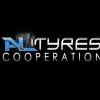
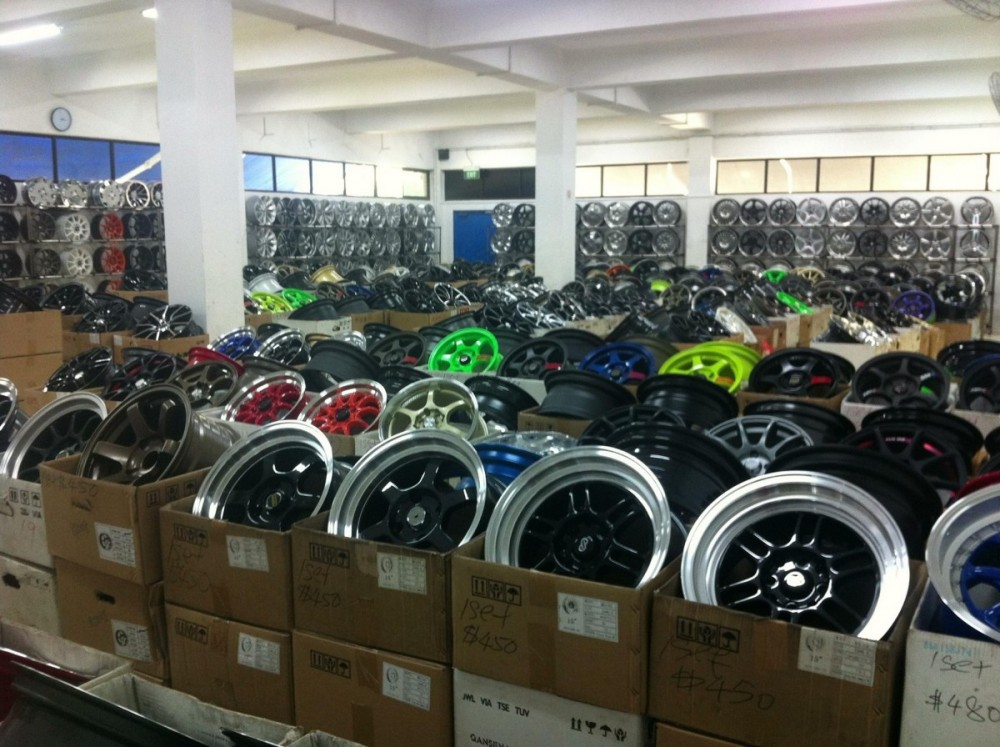


.png)




